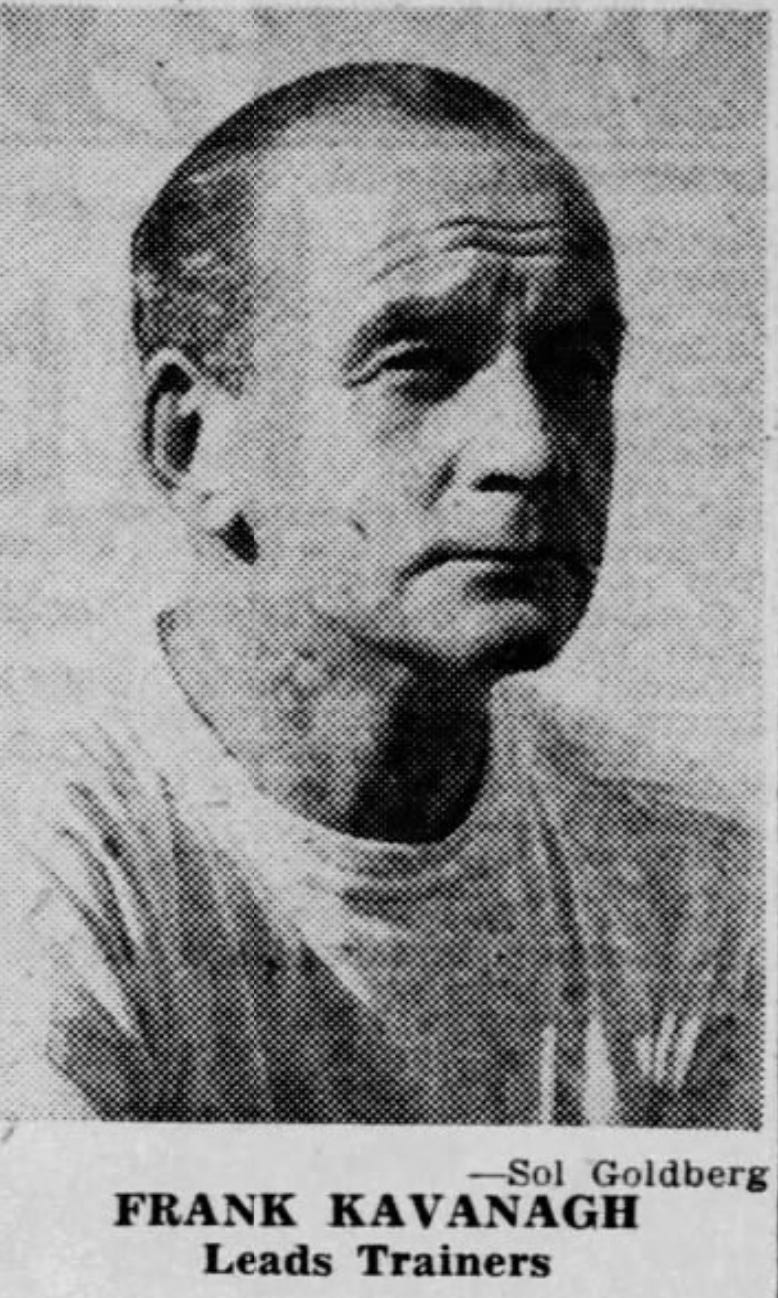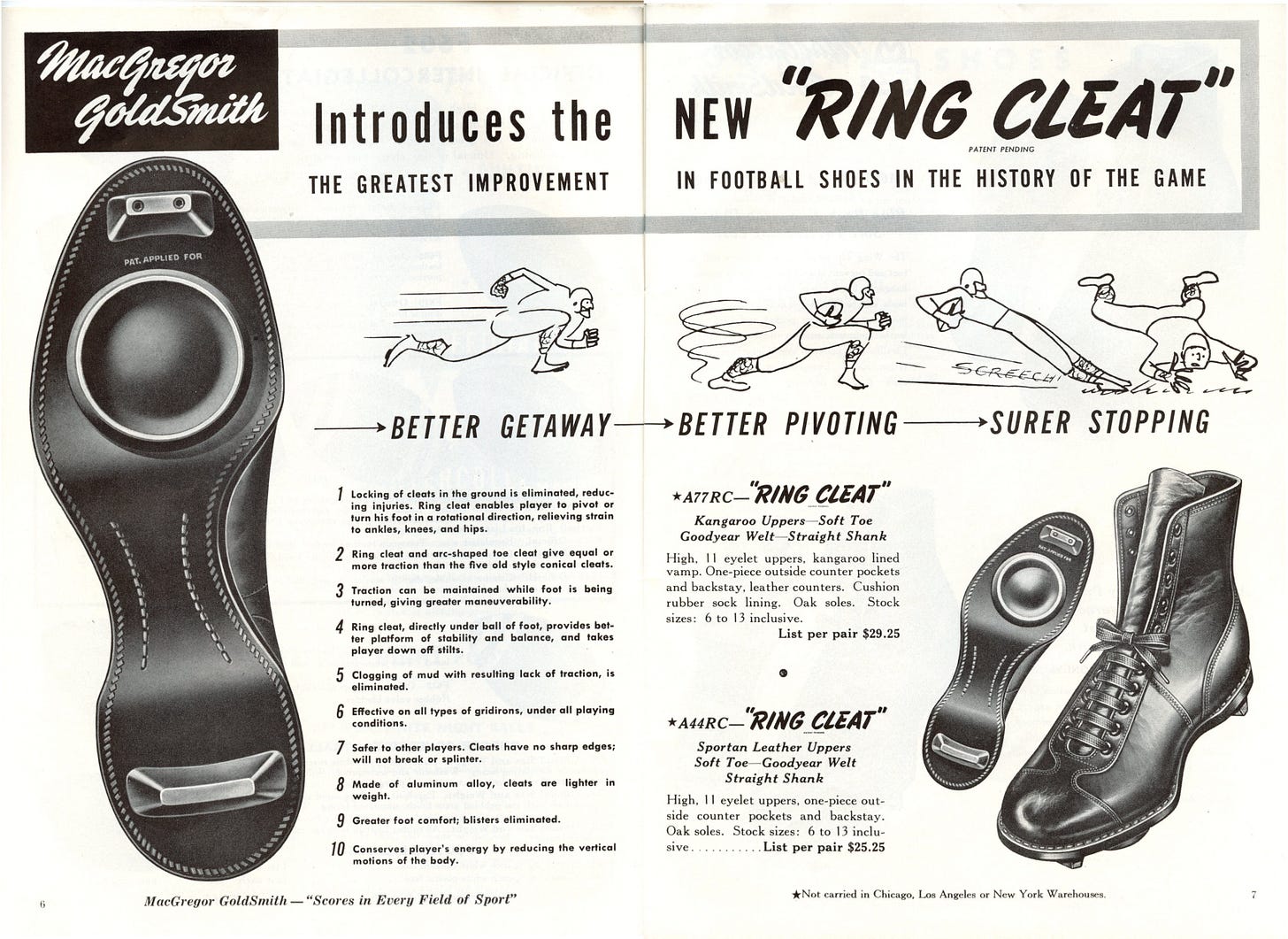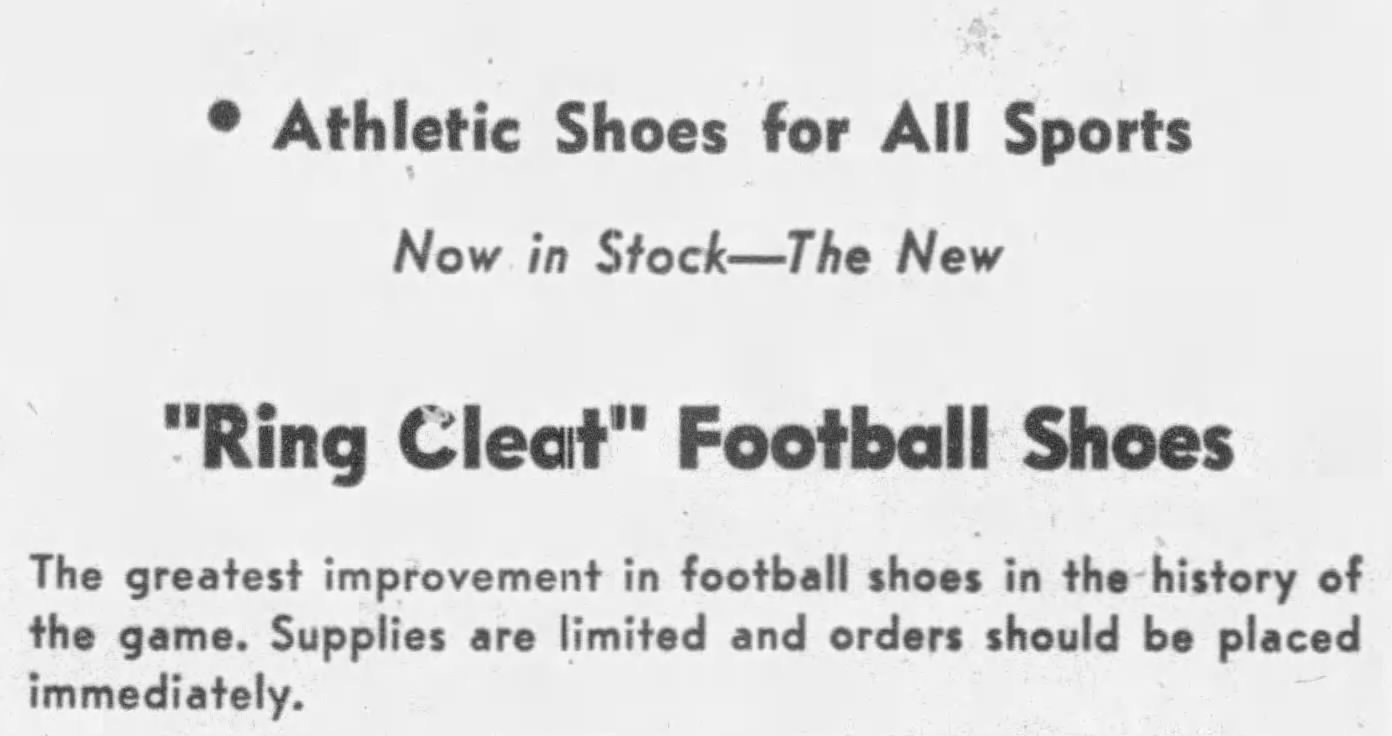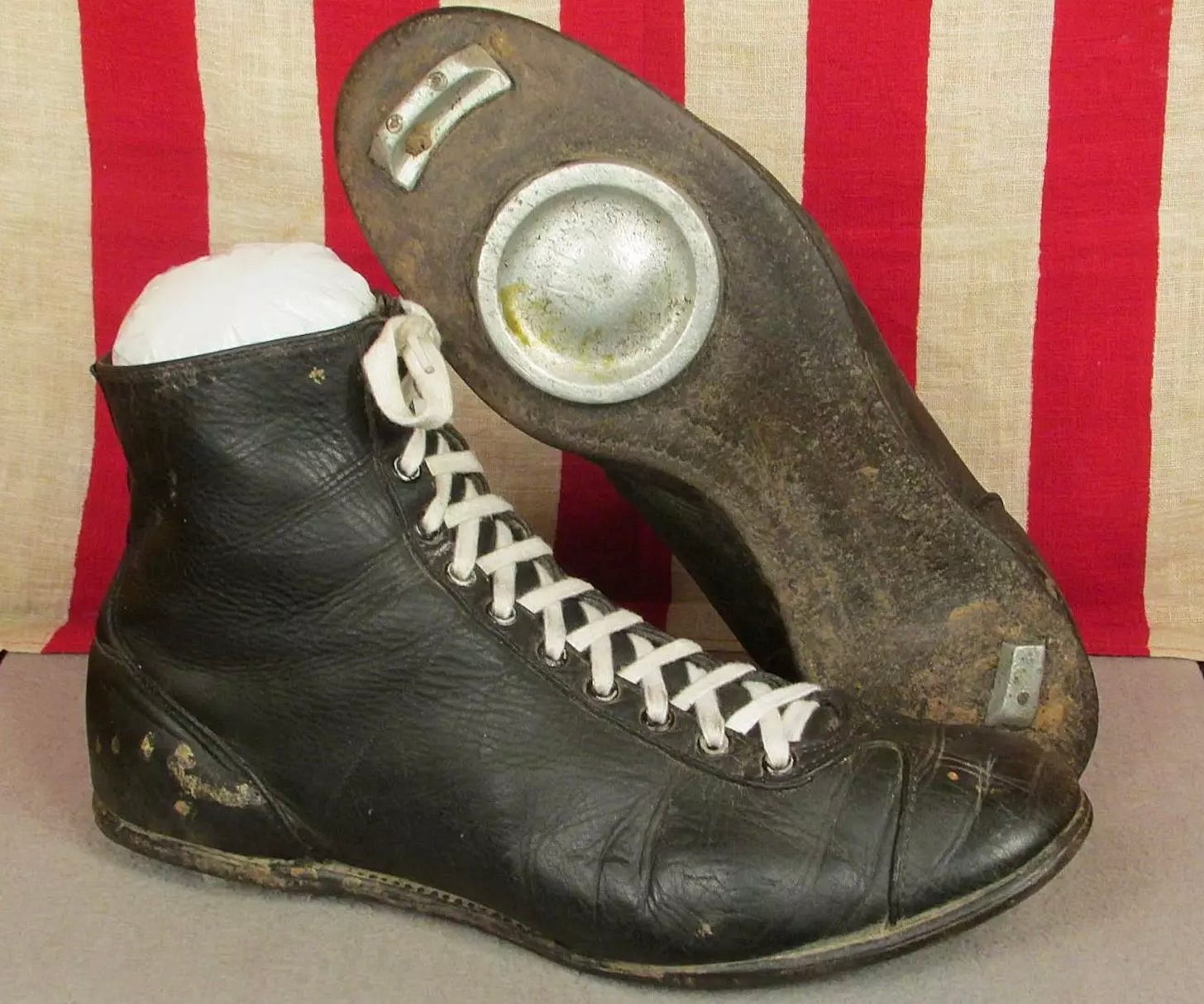Today's Tidbit... The Innovative Ring Cleat
Football coaches perceived increased injuries in the late 1940s, leading many in the broader football industry to consider why that might be the case. According to many, the main culprit was the plastic helmet, which arrived in 1940, but sales did not take off starting until 1946 when plastics again became available for civilian use.
Among those who studied the problem was Frank Kavanagh, Cornell's athletic trainer. Kavanagh was a real Irishman, not an American who claimed the label based on multi-generational ancestry. He enlisted in the British Army at age 16 and spent two years in the trenches in France before emigrating to America. After two years in the trenches, Frank was open to trying new things, especially if they increased safety.

Kavanagh made his way in the athletic training world and ended up at Cornell in 1937. There, he worked with the Cornell Aeronautical Laboratory in the early 1950s to develop Absorblo, used as an exterior pad on football helmets and for shoulder, thigh, and knee pads. The exterior helmet padding idea took off until they realized that the soft padding increased injuries by causing colliding helmets to cause injuries by sticking together rather than glancing off one another.
Despite writing about Cornell, the Aeronautics Lab, and Absorblo in the past, I don't recall coming across references to Frank Kavanagh and his role in those efforts.

Instead, his name came up as I looked into an early 1950s improvement to football shoes: the ring cleat. Besides concerns about plastic helmets causing injuries, football coaches, trainers, and players also knew that many football injuries involved players' knees and ankles. Many of those injuries came when players planted their foot when changing direction. Often, the foot planted so well that it did not rotate, leading to high levels of stress on their joints.
Kavanagh's breakthrough came when he asked a friend who trained horses why horses' feet did not slip in the turns. The conversation led him to consider how a horseshoe-shaped or round cleat might work versus the seven separate cleats on the ball of the foot that had been the norm since John Riddell invented the interchangeable cleat in the late 1920s.
Kavanagh worked with Cornell's Aeronautical Lab on the cleat idea as well, and it came to market before Absorblo. As with Absorblo, the Big Red football team was the guinea pig for what came to be known as the ring cleat. The team wore them in 1950, as long as opposing coaches gave them permission to use the experimental cleat, and their testing confirmed their effectiveness. The ring cleat allowed players' feet to rotate, gain traction, and did not clog with mud and grass when playing on a wet field.
MacGregor Goldsmith, who helped fund some of the research, put the ring cleat on the market in 1951. The NCAA also approved their use.
Newspapers around the country announced the arrival of the aluminum ring cleat, touting its many benefits, at least those mentioned in MacGregor Goldsmith or Cornell’s press release.
Ring cleats became a hot item. Schools proudly announced their purchase of several trial pairs, and at least one San Francisco 49er wore them. Unfortunately, they never caught on and disappeared from the MacGregor Goldsmith catalog in a few years. Why they failed is unknown since the people who wrote the initial press releases chose not to publish the reasons for the product's failure.
Still, that is the price of innovation. Sometimes the product becomes a hit, and other times it lands in history's scrap heap. The ring cleat fell into the latter category.
Postscript
A pair of MacGregor Goldsmith ring cleats is available now on eBay for $335.75 or best offer. You can be the lucky winner.
Click Support Football Archaeology for options to support this site beyond a free subscription.







Seems like you would not get a good bit of traction, probably why they failed
Very interesting. The catalog description makes the ring cleat seem far superior. Wonder why they didn't catch on. Was there a problem with them? If so, what was it. Guess the people who bought and used them are probably all gone now. So, without a time machine, who can find out? Were they tried in other sports played on grass, like soccer?